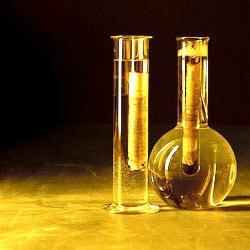Benzene – It is a chemical whose compounds are widely used in various industries. The most commonly used amino – and benzene nitro compounds. It is from them that explosives, organic dyes, and artificial resins are obtained. With their help, insecticides and drugs are made, they are used as rubber vulcanization accelerators, additives to motor fuels and plastics. Constant work with benzene compounds is dangerous for the development of intoxication against the background of chronic poisoning.
Causes of the development of benzene poisoning when working with its compounds
All derivatives and homologues of benzene are methemoglobin formers. The effects of benzene homologues and benzene poisoning are manifested by damage to the central and peripheral nervous system, urinary and visual systems, liver, skin and mucous membranes of the respiratory tract.
Benzene compounds, when ingested through the respiratory organs and skin, form a depot in the subcutaneous tissue. A hot shower or bath can cause a large amount of benzene compounds to be released into the peripheral blood, after which the clinical manifestations intensify.
What is the mechanism of development of benzene poisoning?
 Amino – and benzene nitro compounds have a polytropic effect on the body. Acute intoxication with the substance leads to damage to the central nervous system, methemoglobin formation and hemolysis. In chronic benzene poisoning, parenchymal organs are damaged. In the human body, the process of hemoglobin oxidation is constantly taking place, and it is oxidized not only to oxyhemoglobin. A small percentage of it is oxidized to methemoglobin, which binds very strongly to oxygen. This form of oxidized hemoglobin is unsuitable for performing the function of transporting oxygen to tissues. What symptoms this manifests itself, read further on estet-portal.com.
Amino – and benzene nitro compounds have a polytropic effect on the body. Acute intoxication with the substance leads to damage to the central nervous system, methemoglobin formation and hemolysis. In chronic benzene poisoning, parenchymal organs are damaged. In the human body, the process of hemoglobin oxidation is constantly taking place, and it is oxidized not only to oxyhemoglobin. A small percentage of it is oxidized to methemoglobin, which binds very strongly to oxygen. This form of oxidized hemoglobin is unsuitable for performing the function of transporting oxygen to tissues. What symptoms this manifests itself, read further on estet-portal.com.
So, normally the amount of methemoglobin in erythrocytes does not exceed 1.0-2.5% of the total amount of hemoglobin. When homologues and benzene compounds are inhaled, more methemoglobin is formed in the body, which has its own clinical manifestations.
Clinical presentation of acute benzene poisoning
Benzene poisoning can be acute or chronic.
The main symptom of acute poisoning is the staining of the mucous membranes and skin in a gray-blue color.
The blood has chocolate – brown color, which is the result of the formation of methemoglobin. Benzene poisoning contributes to the development of secondary hemolytic anemia. Free bilirubin is detected in the blood. The intensity of jaundice depends on the functional state of the liver and on the rate of hemolysis.
Clinical manifestations of acute benzene poisoning:
- Vascular injuries are detected by small pinpoint hemorrhages on the skin and mucous membranes.
- The central nervous system is affected with the development of fatigue, severe headaches, depression, balance disorders, a tendency to faint, nausea and vomiting.
- Tendon reflexes disappear, convulsions develop, then loss of consciousness and coma occurs.
- Death occurs from paralysis of the respiratory center in the first hours of poisoning.
The main manifestations of chronic benzene poisoning
Chronic benzene poisoning is manifested by asthenovegetative syndrome, sleep disturbance, increased fatigue and irritability. Recently, with the improvement of working conditions, cases of chronic benzene poisoning are much less common. However, acute poisoning with benzene still occurs at work. This condition requires prompt diagnosis and emergency care.
Therefore, it is important for any specialist to clarify the patient's place of work in order to characterize working conditions and the presence of hazards in the workplace. After all, each specialty has its own negative effects on the body, which should be taken into account when treating a patient.







Add a comment